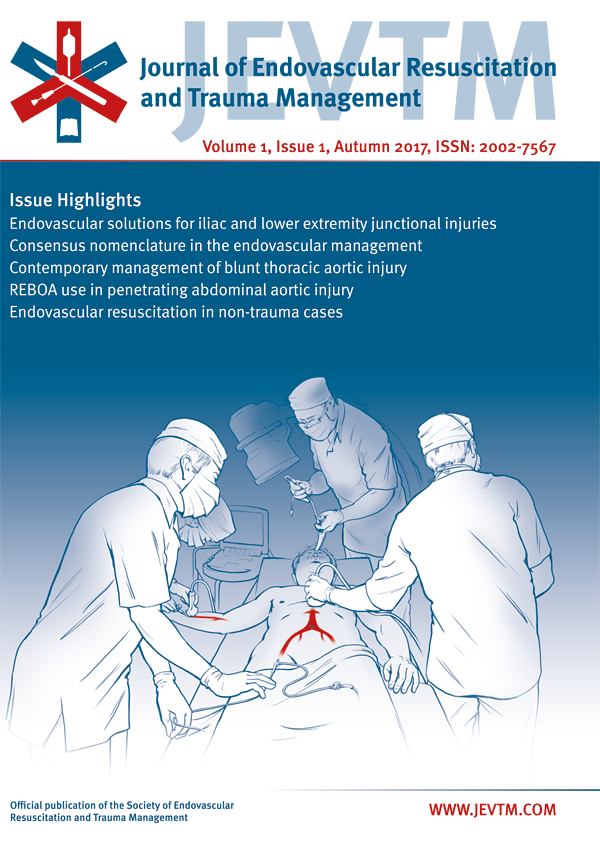Trauma Pan-Scan in Resuscitative Endovascular Occlusion: A Novel Strategy for Hemodynamically Unstable Polytrauma Patients
DOI:
https://doi.org/10.26676/jevtm.v1i1.3Keywords:
Resuscitative Endovascular Balloon Occlusion of the Aorta, REBOA, Trauma Pan-Scan, Computed Tomography, Multidisciplinary Training, Hemorrhagic ShockAbstract
The trauma pan-scan (TPS) offers particular benefits in trauma care. Resuscitative endovascular balloon occlusion of the aorta (REBOA) may provide an opportunity to scan hemodynamically unstable (HU) polytrauma patients; however, the benefits and risks of REBOA-TPS remain unknown. The rationale for TPS in HU patients is to choose the best intervention and to quickly achieve hemostasis rather than directly initiating surgery without scanning. TPS would most greatly benefit geriatric trauma patients and those with coagulopathies with unidentified bleeding sources, particularly noncavitary hemorrhage in blunt trauma and accompanying brain injury, because TPS may predict unexpected physiological collapse via anatomical imaging. Computed tomography (CT) is a common cause of flow disruption, but specific trauma team training was shown to reduce the time spent in the CT room from 16.8 to 7.3 minutes (P < 0.001). While REBOA-TPS cannot be utilized widely or indiscriminately, its appropriate use may increase the number of salvageable trauma patients.
Published
How to Cite
Issue
Section
License
Copyright (c) 2017 Journal of Endovascular Resuscitation and Trauma Management

This work is licensed under a Creative Commons Attribution 4.0 International License.
Authors of content published in the JEVTM retain the copyright to their works.
Articles in the JEVTM are published under the terms of a Creative Commons CC BY 4.0 license, which permits use, downloading, distribution, linking to and reproduction in any medium, provided the original work is properly cited.




